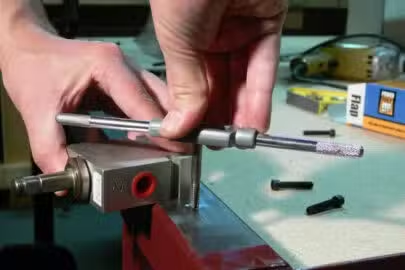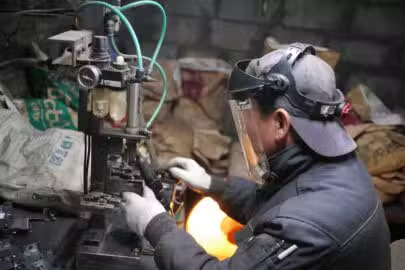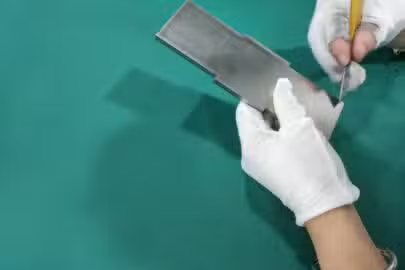Technology constantly evolves, and the automotive industry is not exempted. Manufacturers and project managers continuously seek faster, more reliable, cost-effective solutions to make automobile parts in today’s competitive marketplace. As a result, there are several advances in automotive die casting technologies.
Automotive die casting employs a metal molding technique to create pieces from molten metal. It is an efficient metal manufacturing technique for reducing the weight of car parts and improving mileage without reducing quality. It aids in developing lighter, more resilient components with thinner walls. This is a significant contribution to the automotive industry.
In this article, we will go over the different die casting processes available. We will also explore the numerous benefits of die casting in automobile, including the numerous applications of die-cast auto parts.
What Is Automotive Die Casting?

Automotive die casting employs a metal molding technique to create components from molten metal (die). The metal is then cooled and solidified into machined parts such as engine blocks or gearboxes. A die and a cavity are the two essential components of die casting. The die is made of steel, aluminum, or another alloy and is machined with a sequence of holes and channels that create the component that will be cast. The molten metal flows into the cavities, making the desired part from the raw materials.
This approach eliminates waste while saving manufacturers and customers time and money. Automotive die casting, which employs specialized procedures and materials, enables the fabrication of intricate and durable components crucial for modern cars. Its capabilities effectively align with the need for precision, efficiency, and strength in the automotive industry. This technique enables the creation of high-quality parts and contributes well to environmental sustainability through the effective use of materials.
Automotive Die Casting Trends

Die casting has shown to be a vital technology in the automobile industry, perfectly fitting with the sector’s expectations for quality, efficiency, and innovation. According to projections, the automotive die casting marketplace would exceed $20.31 billion by 2028. It earned $11.1 billion in 2021 and is estimated to expand at a 7.8% yearly rate from 2022 to 2028. The growth in die casting in automotive industry is linked to an increase in middle-income groups’ income, which leads to a rise in passenger car sales.
Furthermore, die cast parts help lower vehicles’ overall weight, reducing fuel emissions and improving fuel efficiency. Manufacturing environmentally friendly parts will drive the expansion of these current market conditions. The detailed applications in numerous vehicle parts, including suspension systems, engine blocks, transmission components, etc., highlight die casting’s broad spectrum of influence. Furthermore, the emphasis on quality control represents the industry’s dedication to excellence, ensuring that every component satisfies the stringent standards demanded by the whole distribution system.
Why Is Die Casting Rapidly Expanding in the Automotive Industry?
Automakers have recently focused on producing lightweight vehicles while maintaining durability. As a result, die casting is one of the most efficient procedures for making automotive components. The application of automotive die cast components is increasing on a daily basis. But why is there such a dramatic growth in die casting demand from automotive manufacturers? Here are some of the reasons.

Manufacturing Lightweight Component
Fuel economy standards in the automotive sector are now more strict. There is an increasing push to develop more fuel-efficient vehicles. As a result, automakers use aluminum die-casting to accomplish this purpose.
Aluminum is lightweight with an outstanding strength-to-weight ratio. As a result, it is the most frequently used metal for casting engine parts, wheels, etc. As a result, vehicle makers are now producing lighter and safer automobiles by verifying the integrity of internal and external components.
Greater Automation and Adaptability
The expanding usage of advanced technology has increased the appeal of automobile die casting. Automating the manufacturing process makes it more efficient and productive, allowing for manufacturing more automotive die cast components.
Furthermore, this technology effectively creates advanced vehicle parts with distinctive designs. The technology makes it possible to build pieces with complex shapes and sizes and efficiently install them within vehicles.
Short Manufacturing Cycle
Die casting is well-known in the automotive sector for its quick production cycle. The rapid filling of the die casting mold and fast material solidification help achieve this efficiency. The significance of this cannot be overstated, as it directly impacts cost and efficiency. Manufacturers can make more parts in less time by lowering the time necessary for production, resulting in significant cost savings.
Increased Productivity
Die casting for automotive parts is more efficient than conventional manufacturing methods because it requires less labor per product unit. It saves money by allowing for the mass manufacture of parts with consistent quality. This efficiency is significant in large-scale manufacturing because even minor savings per part can add up to substantial total die-casting cost savings.
Increased Component Strength
Die casting helps produce parts with outstanding durability. This strength increases longevity and dependability in vehicle parts such as chassis structures and engine components. Manufacturing high-strength wheels that can resist harsh driving conditions is one example.
Precision Parts Manufacturing
In the automotive sector, precision is everything. This is accomplished by using die casting, which allows for tight tolerances and complex designs. The method guarantees that each component is made to exact specifications, which is critical for vehicle performance.
Design Freedom
Die casting provides unrivaled design versatility. It enables the fabrication of intricate shapes that would be challenging to achieve using traditional approaches. Designers can use this flexibility to develop practical and visually appealing components, such as modern dashboard designs.
Improved Sustainability
Die casting is noted for its high material usage rate, which means that waste is kept to a minimum. This not only improves material efficiency but also offers considerable environmental benefits. The procedure adheres to sustainable production standards by reducing waste. As a result, we can be confident that auto parts casting will not harm the environment. Furthermore, the capacity for recycling the materials employed for these components increases their value.
An Overview of the Die Casting Process
Die casting methods are classified into two types: hot and cold die casting. Aside from the obvious temperature difference, these processes differ in setup and operating pressure. Each procedure is described in full below:
Hot Chamber Die Casting

This die casting method is also known as hot die casting. The furnaces built into the gooseneck machines heat the metal until it melts. The nozzle and gooseneck of a hydraulically propelled piston are used to push molten metal from the furnace into the die casting chamber. The molten metal is then maintained under pressure in the die cavity until it solidifies.
This type of die casting has an inherent melting point. As a result, it is more effective with metals with lower melting points. Aluminum has a high melting point of 1,220°F. Thus, it is unsuitable for this method. Zinc and magnesium, on the other hand, are ideal for this technique due to their low melting points.
Hot die casting has a high production rate of over 18,000 shots per hour for small automobile components. Metals are melted within the casting machine, resulting in minimal material waste. Because it is a low melting point method, the die life is longer, which helps to reduce overall die casting costs. However, the technique is only cost-effective for large-volume productions. There is also poor metal fluidity, which limits the complexity of the goods.
Cold Chamber Die Casting

During this technique, an operator pours the molten metal into the injection cylinder’s shot sleeve. Following the pour, a hydraulic plunger forces the molten metal into the cavity without scorching the sleeve. This procedure uses pressures ranging from 30 MPa to 150 MPa. Since heat is not employed, this approach works well with aluminum alloys.
Cold die casting produces automotive die casting components with exceptional dimensional accuracy. Because of the higher pressure, thicker metal castings and stronger vehicle parts are produced. The technique is simple to carry out and less expensive to maintain.
However, due to the transfer procedure, the cycle time is longer than the hot chamber method. There is also the possibility of excessive amounts of pollutants, which could compromise the quality of the final vehicle parts.
Here’s a table of comparison between the two die casting techniques:
| Feature | Hot Chamber Die Casting | Cold Chamber Die Casting |
| Melting and Injection | Molten metal is kept in the same chamber used for injection. The metal is maintained in a liquid state. | Molten metal is often held in a separate furnace and ladled into the injection chamber. Metal is solidified before injection. |
| Metal Compatibility | Suitable for low-melting-point metals like zinc, tin, and lead. | Suitable for high-melting-point metals such as aluminum, brass, and magnesium. |
| Machine Design | Simpler machine design due to the integration of melting and injection in the same chamber. | More complex machine design with a separate melting furnace and injection chamber. |
| Cycle Time | Shorter cycle times as the metal is already in a liquid state. | Longer cycle times due to the need to melt the metal in a separate furnace before injection. |
| Energy Consumption | Generally lower energy consumption as the metal is kept in a liquid state. | Higher energy consumption because of the need for a separate melting furnace. |
| Tooling and Maintenance | Less wear on the die casting tooling since it is exposed to lower temperatures. | More wear on the die casting tooling due to exposure to higher temperatures. Regular maintenance is crucial. |
| Cost of Equipment | Generally, hot chamber machines are less expensive. | Cold chamber die casting machines are typically more expensive due to their design complexity and additional furnace. |
| Automation Possibility | Easier to automate for high-volume production. | Automation is possible but may be relatively more challenging and expensive. |
| Applications | Small automotive parts like die-cast zinc components (e.g., gears, connectors). | Larger automotive parts like aluminum engine components (e.g., cylinder heads, engine blocks). |
hot chamber die casting vs. cold chamber die casting
Common Metals Used in Automotive Die Casting
Different parts of an automobile may require different types of metals. The ability of die casting to work on a wide range of metals makes it an excellent choice for machining these vehicle parts. Below are some examples of metals that are suited for the process:
Zinc
This is the most commonly used metal alloy in die casting. Zinc has a strong surface finish in addition to its high strength and corrosion resistance. Machinists employ zinc to create dies that can be used on various molding machines.

Zinc die casting is castable in hot chamber machines. It provides about 100% accuracy. As a result, it yields products with smooth surfaces and avoids the need for additional processing.
This die-casting metal is widely used in products such as door lock housings, retractor gears, seat belt pulleys, etc. Furthermore, it is perfect for producing vehicle parts with high aesthetic standards, embossing, or tight tolerances.
Benefits of Zinc Die Casting
There are numerous advantages to zinc die casting, including the following:
- Increased Flexibility: Because zinc die castings are flexible, they can be used to fabricate small pieces. Zinc automotive castings, for example, can be used as springs and other moving elements in a wide range of machines.
- Improved Corrosion Resistance: Zinc is a great all-around material for parts that may come in contact with different corrosive substances. It resists corrosion more effectively than many other metals. Because of its rust-proofing characteristics, it is also suitable for use in outdoor equipment.
- Dimensional Stability: Castings made from zinc often resist dimensional changes that may be caused by moisture or heat changes. This makes them useful for applications requiring constant pressure over lengthy periods.
- Excellent Thermal Conductivity: Zinc’s exceptional thermal conductivity and strength make it perfect for use in electrical components within the vehicle. Zinc allows these components to quickly dissipate heat generated by electrical equipment or engines running at high temperatures.
- Sustainability and Environmental Friendliness: Die castings are environmentally friendly since they emit lesser carbon dioxide and use less energy than other vehicle manufacturing technologies. It also generates fewer waste products than extrusion molding procedures.
Aluminum
Aluminum is another popular metal alloy for automotive die casting. A key component of aluminum is aluminum oxide (alumina). Aluminum alloys are commonly used as raw materials in the fabrication of dies since they have great heat transfer qualities and produce excellent surface finishes.

Aluminum is lightweight and has high dimensional stability, making it an excellent choice for thin-walled automobile parts. In general, low-density aluminum is more widely used in the automotive sector. Aluminum automotive castings are stronger even at high temperatures.
Using a steel mold, the aluminum die casting method may create thousands of castings in a single session. It is perfect for parts like engine brackets, valve bodies, gearbox cases, hydraulic cylinders, and so on.
Benefits of Aluminum Die Casting
The use of aluminum die casting for automotive applications provides the following benefits:
- Manufacturing Lightweight Components: This metal has been employed for decades as a cost-effective alternative to other metals such as steel. It is lighter than steel and has a lower density than most metals, making it ideal for creating lightweight parts. These components are critical in many situations where weight is essential. Airbag systems and engine components rely on lightweight aluminum die casting auto parts. This is because they are lighter than those that are made of steel or other materials.
- Increased Flexibility: Aluminum is unusually flexible when molded into solid structures, unlike other rigid metals. It is useful for making complicated shapes without cracking or breaking down during processing. Aluminum is also more resistant to oxidation than the majority of other metals. As a result, it requires fewer protective coatings. This makes it appropriate for applications requiring significant corrosion resistance but requiring overall weight reduction.
- Reliability and Safety: Aluminum die casting is a relatively safe technique, especially compared to other manufacturing methods. This is because aluminum alloys are intrinsically more stress-resistant than other materials. This makes them less likely to break or crack under stress.
- Environmentally Friendly: Using aluminum for the die casting process produces no waste or emissions into the environment. This offers an environmentally friendly solution to help adhere to stringent environmental laws such as ISO 14001 standards.
Magnesium
Magnesium has high strength and can be used with other metals to make stronger components. Because of their high thermal conductivity, magnesium alloys are frequently used to produce dies. As a result, they are suited for use with high-temperature tools requiring rapid cooling following machining operations.

Magnesium, in combination with other metals, opens up a wide range of choices for complex, thin-walled components. It also has an outstanding strength-to-weight ratio and is extremely heat and temperature-resistant.
Benefits of Magnesium Die Casting
The following are some advantages of using magnesium die casting:
- Lightweight Automobile Manufacturing: Machinists employ magnesium die-casting to create light vehicles with durable body structures. Magnesium alloy is a good material because of its excellent corrosion resistance, good machinability, and ability to be shaped into various forms and sizes.
- Corrosion Resistance: This metal does not absorb moisture like steel, so it is more rust-resistant. It does not develop pitting like cast iron, making it a perfect material for use in applications with high amounts of water or humidity.
- Environmental Friendliness: This lightweight metal may be used to make light automobile parts due to its environmental friendliness and low emission levels.
Applications of Die Casting for Automotive Products
Automotive castings have a wide range of uses in the sector due to the diverse possibilities afforded by die cast products. They are critical in producing sophisticated vehicles while maintaining high standards of quality and safety.

Structural Components
Die casting is used to create structural components for vehicles. They are employed in high-end vehicles and have been proven to be a significant component in increasing the efficiency of automobile manufacturing. The die-cast parts have lowered the wall thickness.
Customization
Die casting ensures a high degree of customization in automobile manufacturing. Custom parts are manufactured using a variety of die casting technologies. This has opened up new opportunities for the automotive sector to explore. It is simpler to develop parts designed to meet the vehicle’s needs. Furthermore, customization in automotive castings has no impact on the surface gloss or strength of the car part.
Here are some components often created with die casting in automotive industry:
- Engine parts, e.g., gas engine parts & cylinder head
- Transmission and chassis parts
- Power steering and braking systems
- Fuel intake parts
- Air-conditioning systems
- Mounting brackets for stepper motors and electric motors
- Retractor spools for seatbelts
- Electronic covers for motors, gearbox, shade poles, etc.
- Electronic equipment and heat sinks
- Sensor and airbag housings
- Intricate lock barrels
- Connectors for autonomous vehicles
- Sensor and lidar housings
Zintilon Exceptional Die Casting Services
Automotive die casting is an exciting development in the industry today, having significantly reduced automobile manufacturing costs while also enhancing quality and durability. Zintilon specializes in producing metal casts that are precisely tailored to the requirements of your applications. Our specialist technicians are highly qualified and experienced in die casting services. We collaborate with you to develop die cast parts that precisely fit the needs of your applications.
We are also experienced in automotive part manufacturing with a proven record of delivering high-quality, lightweight parts. Our understanding of a wide range of materials also aids us in selecting the best materials for your vehicle parts. This ensures that you obtain the finest outcomes possible for your project. Get a quote by uploading your CAD file today!




